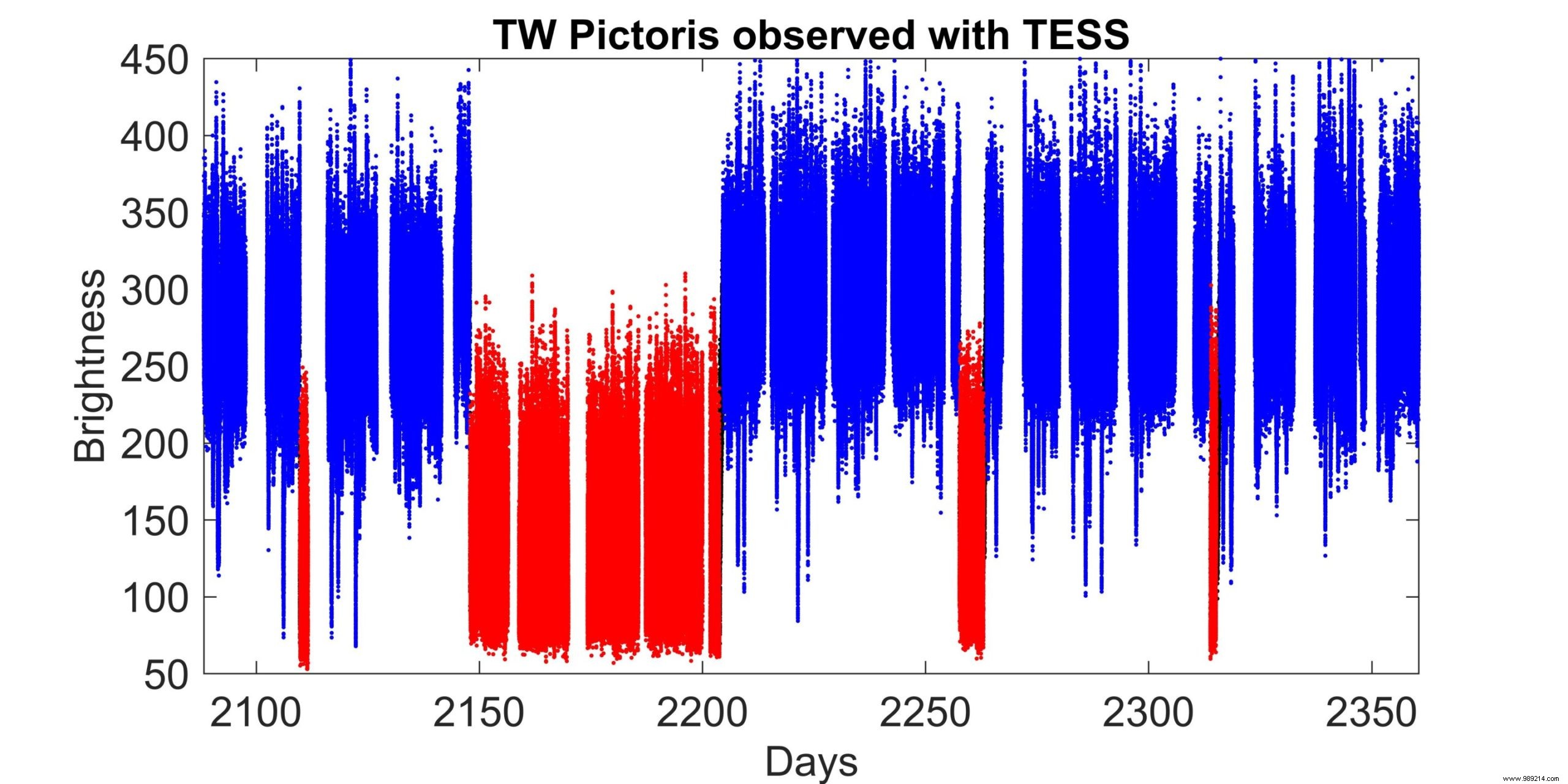Based on data from the TESS telescope, a team of astronomers announces that they have observed a white dwarf suddenly turn on and off for the first time. Details of the study are published in the journal Nature.
White dwarfs are the fate of most stars, including the Sun, after burning the hydrogen that fuels them. These objects are approximately the size of a small planet, but have a mass close to that of an average star.
That said, many white dwarfs evolve in a binary system. In some cases, when the two objects involved are close enough (orbital periods ranging from tens of minutes to several hours), a white dwarf can then "steal" matter from its companion, which has the effect of suddenly increasing its brightness.
Generally, this accretion process is relatively stable, with significant modulations only occurring on timescales of days, weeks, or months . In a recent study, a team from Durham University, UK, reported observing a white dwarf "turning on and off" (factors up to 3.5 ) in only thirty minutes , or on a much shorter time scale. This is unheard of.
"To see TW Pictoris' luminosity plummet in thirty minutes is in itself extraordinary, as this has never been seen in other white dwarfs in accretion. This is totally unexpected based on our understanding of how these systems are supposed to feed “, says Dr. Simone Scaringi, lead author of the study.

For this observation, the astronomers used the Transiting Exoplanet Survey (TESS) satellite, usually requisitioned for the search for exoplanets. The white dwarf in question, TW Pictoris, is approximately 1,400 light-years from Earth . The object "feeds" on some of the hydrogen and helium of its smaller companion star.
Normally, the flow of material onto the white dwarf's accretion disk from its companion star is relatively constant. Also, it shouldn't drastically affect its luminosity on such short timescales. Since the brightness of a growing white dwarf is affected by the amount of surrounding matter it feeds on, researchers plan to use this new discovery to learn more about the physics behind the accretion process.
In this case, the researchers believe they witnessed "reconfigurations of the white dwarf's surface magnetic field".
In this specific case, the object's magnetic field would rotate so rapidly that a centrifugal barrier could prevent the "fuel" of the accretion disk from being sucked in so constant by the white dwarf. Occasionally, this fuel (mostly hydrogen and helium) would eventually pass through a small "gate", leading to those small, semi-regular increases in brightness observed by astronomers.